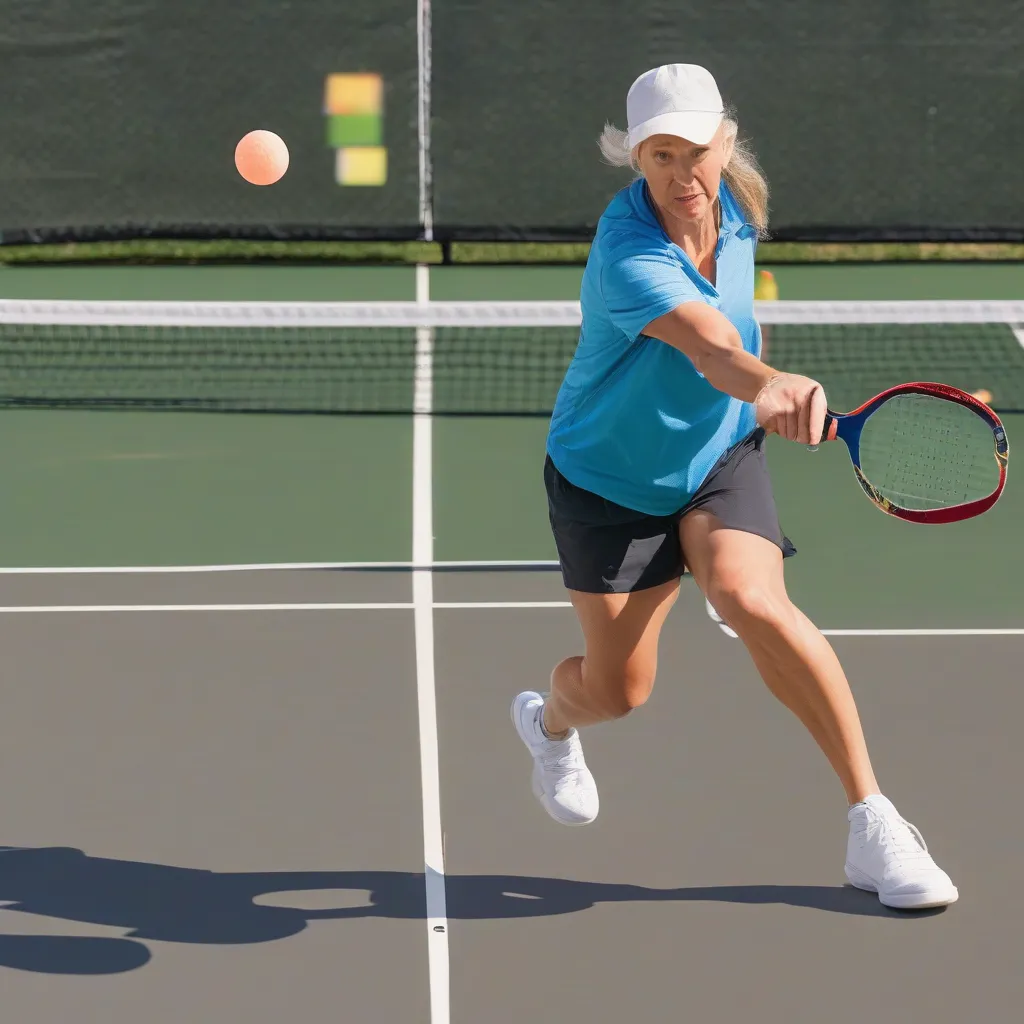Have you ever felt that mid-game slump in pickleball, where your legs feel heavy and your reactions slow? That’s court fatigue creeping in, and it can be the difference between victory and defeat. As a registered dietitian and meal prep coach with eight years of experience, I understand the importance of energy management, not just in the kitchen, but on the court as well. In this article, we’ll explore effective pickleball strategies to manage court fatigue and keep you performing at your best throughout the match.
Understanding Court Fatigue in Pickleball
Court fatigue is a combination of physical and mental exhaustion that impacts your game. It’s more than just tired muscles; it affects your decision-making, reaction time, and overall performance. Recognizing the signs of fatigue is crucial: heavy legs, reduced agility, decreased accuracy, and mental fogginess are all indicators.
Strategic Gameplay to Minimize Fatigue
Pickleball is a game of strategy, and using smart tactics can conserve energy and reduce court fatigue. Let’s delve into some key strategies:
Positioning and Movement
- Control the Center: Controlling the non-volley zone (NVZ) allows you to dictate the pace of the game and reduce unnecessary movement. “A strong NVZ game,” says pro pickleball player Sarah Ansboury, “forces your opponents to expend more energy, giving you a strategic edge.”
- Efficient Footwork: Short, quick steps are more efficient than large, lunging movements. Practice shuffling sideways and using small steps to cover the court. This minimizes wasted energy and improves your court coverage.
- Reduce Unforced Errors: Unforced errors force you to play extra shots, contributing to fatigue. Focus on consistent, controlled shots to keep rallies short and conserve energy.
Shot Selection
- Strategic Dinking: Dinking is a low-energy, high-reward shot that can set up winning opportunities without exhausting you. Mastering the dink can significantly reduce the physical demands of the game.
- Power Shots with Purpose: While power shots can be effective, use them strategically. Don’t overhit every shot; choose your moments to unleash power and conserve energy for crucial points.
- Third Shot Drops: Consistent third shot drops can help you establish control at the net early and reduce the need for long rallies and excessive movement.
Doubles Strategies
- Communication is Key: In doubles, clear communication is crucial for minimizing unnecessary movement. Knowing your partner’s position and intentions allows you to cover the court efficiently and conserve energy.
- Divide and Conquer: Effectively dividing the court between partners ensures efficient coverage and reduces the need for excessive running.
- Switching Strategies: Adapting your strategy based on your opponents’ strengths and weaknesses can help you gain an advantage while minimizing energy expenditure. “Knowing when to switch from a power game to a more strategic dinking game,” shares pickleball coach Mark Renneson, “is a hallmark of experienced doubles teams.”
Off-Court Preparation for Peak Performance
Your preparation off the court is as important as your strategy on the court. Here are some crucial elements:
Nutrition and Hydration
- Pre-Game Fuel: Consume a carbohydrate-rich meal or snack 1-2 hours before playing to provide sustained energy. Think oatmeal, whole-grain toast, or fruit.
- Hydration is Essential: Dehydration can lead to fatigue and decreased performance. Drink plenty of water throughout the day and during matches.
- Electrolyte Balance: Replenishing electrolytes lost through sweat is essential for optimal muscle function and preventing cramps. Consider electrolyte drinks or snacks during longer matches.
Physical Conditioning
- Cardiovascular Fitness: Regular cardiovascular exercise improves your endurance and reduces fatigue during matches. Running, cycling, and swimming are all excellent options.
- Strength Training: Strengthening your legs and core improves your stability, agility, and overall court coverage, minimizing the risk of injury and fatigue.
- Flexibility and Mobility: Regular stretching and mobility work improve your range of motion, reduce muscle stiffness, and prevent injuries, contributing to better on-court performance.
 Pickleball Court Fatigue Management
Pickleball Court Fatigue Management
Mental Toughness
- Focus and Concentration: Maintain focus on the game, even when fatigued. Visualize successful shots and maintain a positive mindset.
- Stress Management: Pickleball can be mentally demanding. Practice relaxation techniques like deep breathing to manage stress and maintain focus.
- Pre-Match Routine: Developing a consistent pre-match routine can help you mentally prepare for the game and reduce anxiety, allowing you to perform at your best.
Managing Fatigue During the Match
Even with the best preparation, fatigue can still set in. Here’s how to manage it during a match:
Take Strategic Breaks:** Utilize timeouts and changeovers to rest, hydrate, and refuel. Even short breaks can make a big difference in your energy levels.
Listen to Your Body:** Pay attention to your body’s signals. If you’re feeling excessively fatigued, consider adjusting your strategy or taking a longer break.
Positive Self-Talk:** Encourage yourself and maintain a positive attitude. Positive self-talk can boost your energy and help you push through fatigue.
Conclusion
Managing court fatigue is essential for success in pickleball. By implementing these strategies, both on and off the court, you can optimize your performance, enjoy longer matches, and reduce the risk of injury. Remember, pickleball is a game of strategy and endurance. By focusing on efficient movement, smart shot selection, proper nutrition, and mental toughness, you can overcome fatigue and elevate your game. Now, what are some of your favorite strategies for staying energized on the court? Share your tips in the comments below! Check out these related articles for further information on improving your pickleball game: Improving Pickleball Endurance and Strategic Tips for Playing Effectively in Hot Conditions.
- Baker, Joe (Author)
- English (Publication Language)
- Bond, Payton (Author)
- English (Publication Language)
- Anderson, Brian (Author)
- English (Publication Language)
- Hall, Dennis (Author)
- English (Publication Language)
- Foster, Blake (Author)
- English (Publication Language)
- Publishing, Fitness Research (Author)
- English (Publication Language)
- Arthur, S. M. (Author)
- English (Publication Language)
- Callahan, John (Author)
- English (Publication Language)
- Forbes, Meganne (Author)
- English (Publication Language)
- Baker, Joe (Author)
- English (Publication Language)









